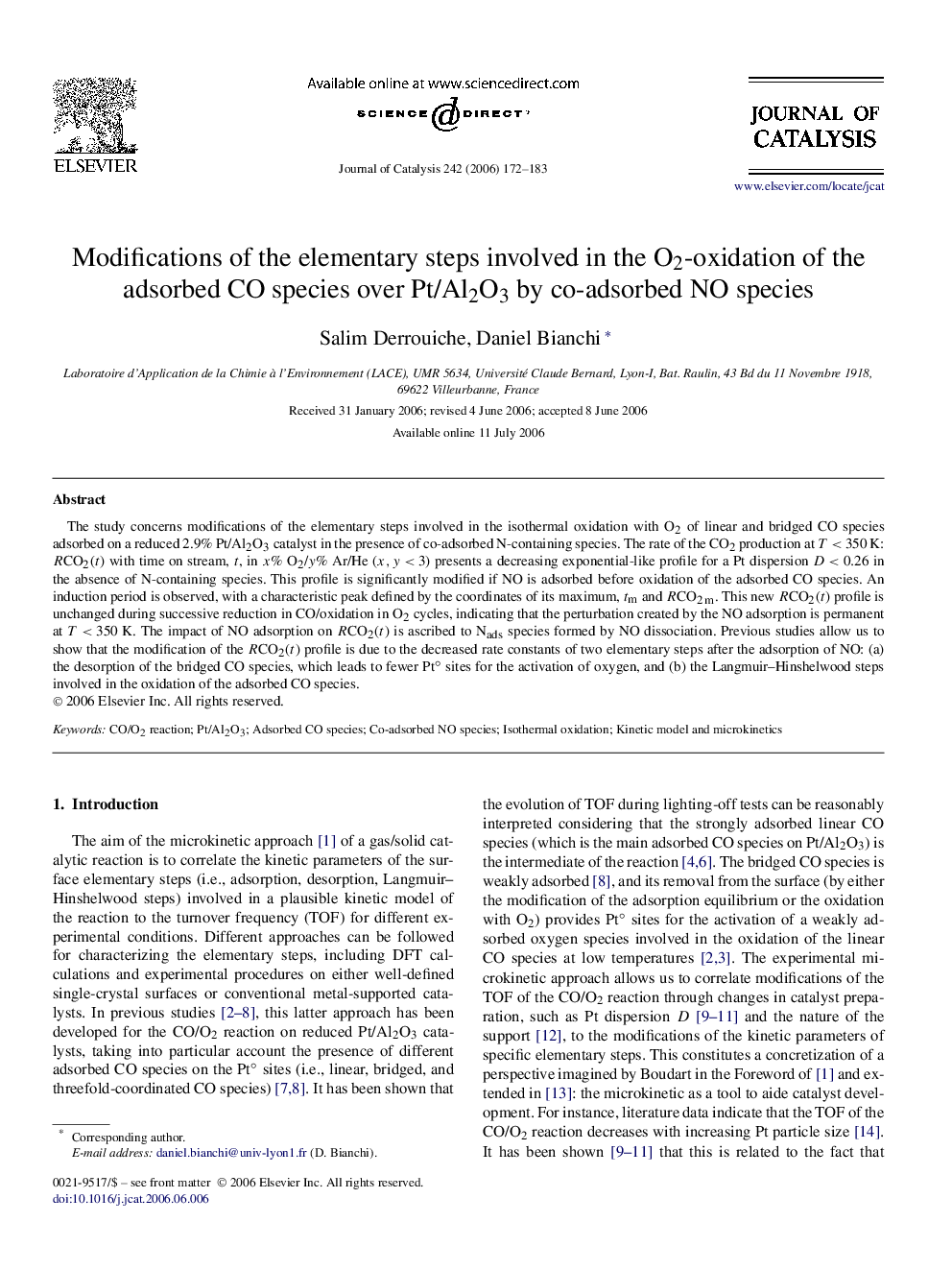| Article ID | Journal | Published Year | Pages | File Type |
|---|---|---|---|---|
| 63472 | Journal of Catalysis | 2006 | 12 Pages |
The study concerns modifications of the elementary steps involved in the isothermal oxidation with O2 of linear and bridged CO species adsorbed on a reduced 2.9% Pt/Al2O3 catalyst in the presence of co-adsorbed N-containing species. The rate of the CO2 production at T<350 KT<350 K: RCO2(t) with time on stream, t, in x% O2/y % Ar/He (x,y<3x,y<3) presents a decreasing exponential-like profile for a Pt dispersion D<0.26D<0.26 in the absence of N-containing species. This profile is significantly modified if NO is adsorbed before oxidation of the adsorbed CO species. An induction period is observed, with a characteristic peak defined by the coordinates of its maximum, tmtm and RCO2 m. This new RCO2(t) profile is unchanged during successive reduction in CO/oxidation in O2 cycles, indicating that the perturbation created by the NO adsorption is permanent at T<350 KT<350 K. The impact of NO adsorption on RCO2(t) is ascribed to Nads species formed by NO dissociation. Previous studies allow us to show that the modification of the RCO2(t) profile is due to the decreased rate constants of two elementary steps after the adsorption of NO: (a) the desorption of the bridged CO species, which leads to fewer Pt° sites for the activation of oxygen, and (b) the Langmuir–Hinshelwood steps involved in the oxidation of the adsorbed CO species.
